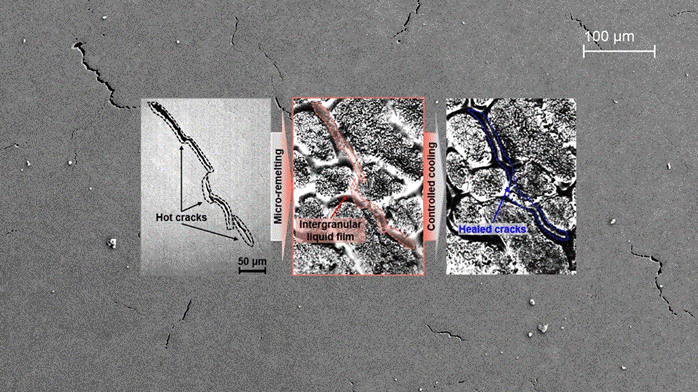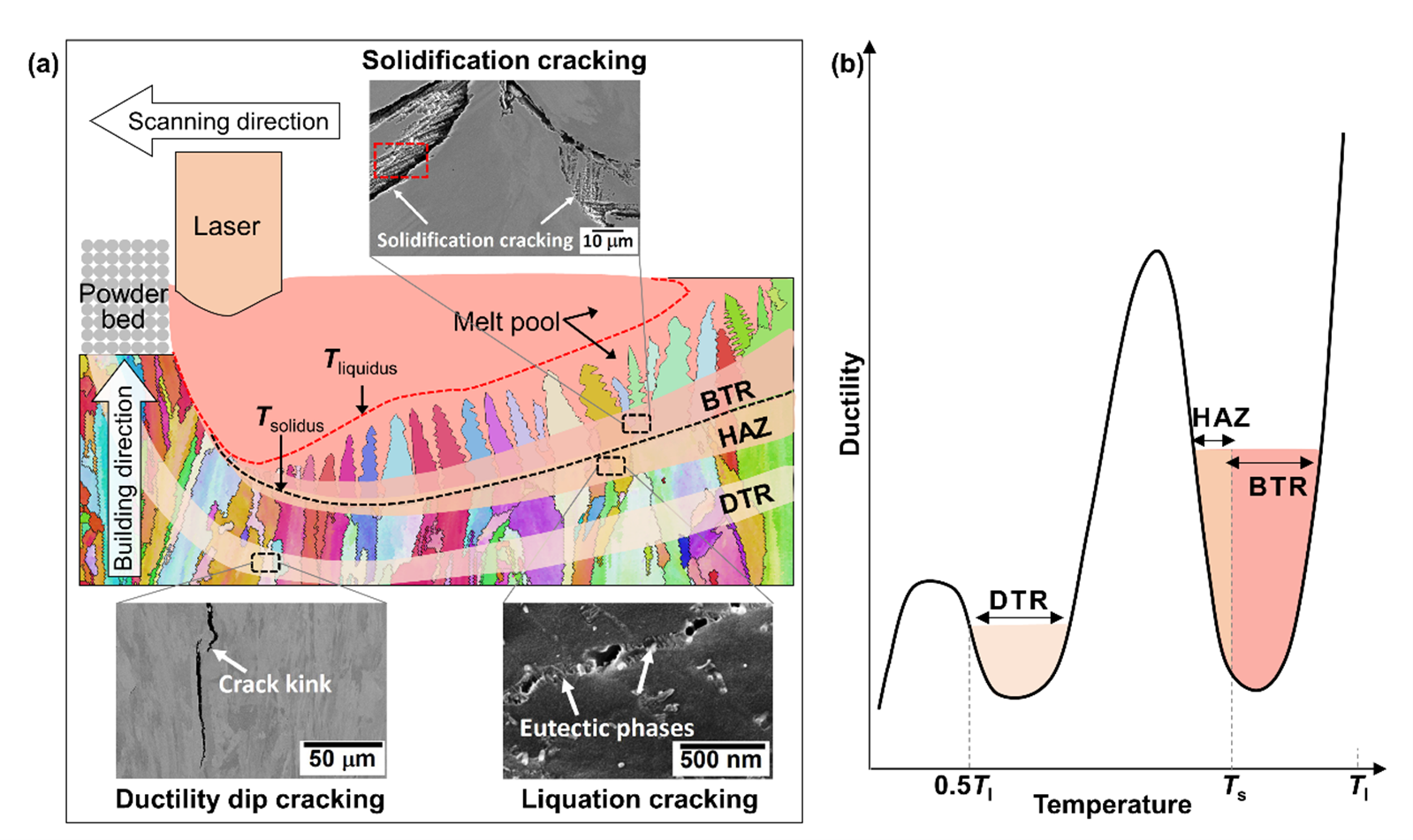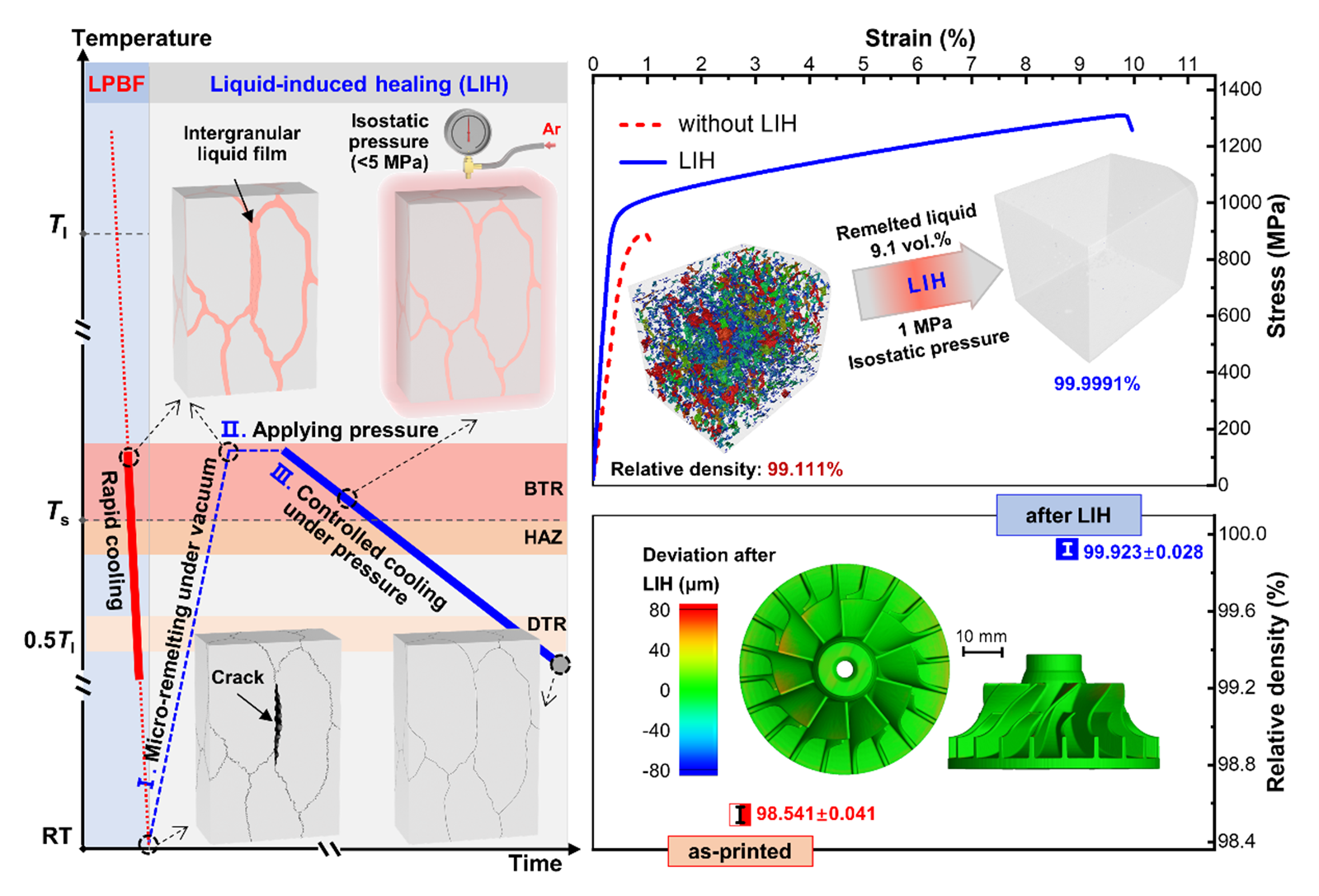Despite being recognized as a disruptive technology, laser additive manufacturing (LAM) has not yet achieved the widespread commercial application envisioned in its early stage. One of the most critical challenges is the cracking issue that limits the printability of most existing engineering alloys. Most crucial engineering alloys currently used in industries, such as high-strength aluminum alloys and γ’-strengthening nickel-based superalloys, are struggling to find their pathway to achieving crack-free production via LAM.
The understanding of cracking defects in LAM primarily inherits from the knowledge obtained from casting and welding. Based on fractography characterization, as shown in Figure 1, the research community has categorized the observed bulk cracking into hot cracking and ductility dip cracking (DDC). Hot isostatic pressing (HIP) is a guaranteed post-treatment method to close cracks without upgrading the alloy compositions or manufacturing system. However, the surface-connected cracks cannot be closed and need to be further removed by machining. Furthermore, HIP equipment is cumbersome and costly due to the indispensable high-pressure supply system.

Chair Professor Qiang Zhu’s research group from the Department of Mechanical and Energy Engineering (MEE) at the Southern University of Science and Technology (SUSTech) recently published a study introducing a novel technology for healing cracks in laser additive manufacturing.
Their work, entitled “Liquid-induced healing of cracks in nickel-based superalloy fabricated by laser powder bed fusion”, has been published in the Acta Materialia.

Figure 1. Cracking mechanism in LPBF. (a) Schematic illustration of the cracking models. (b) The ductility dips of the material at elevated temperatures.
The researchers report a liquid-induced healing (LIH) post-process that enables complete healing of those microcracks by inducing the solid-liquid phase transition at the cracking regions, as shown in Figure 2, resulting in enhanced mechanical properties. Specifically, they adopted In738LC alloy prepared by laser powder bed fusion as the demonstration material to reveal the mechanisms of remelted liquid fraction and isostatic pressure during the crack healing processing.

Figure 2. Graphical abstract of the paper.
Compared with the HIP process, which is currently widely applied in industrial areas, LIH can heal surface-connected cracks, avoiding the additional surface machining and releasing the potential for processing complex components. Besides, the isostatic pressure required by LIH is usually less than one-twentieth of that for HIP, significantly simplifying the equipment construction and reducing process costs, making it much easier to meet the application needs that match with additive manufacturing.
Due to the process cost and operational complexity comparable to traditional heat treatments, LIH is anticipated to be a routinized densification post-process integrated with metal additive manufacturing. Applying LIH means no need to be obsessed with totally crack-free components during manufacturing, which will immediately promote the commercial applications of non-weldable alloys in additive manufacturing. LIH can also be extended to dealing with the cracks and the shrinkage porosities in castings because of the similar mechanism to the cracking issue in LPBF.
Research Associate Professor Xiaogang Hu from the Department of MEE at SUSTech is the first author of the paper. Chair Professor Qiang Zhu is the corresponding author, and SUSTech is the first affiliation unit.
This research was supported by the National Natural Science Foundation of China (NSFC), Shenzhen Science and Technology Innovation Commission, and SUSTech Core Research Facilities (SCRF).
Paper link: